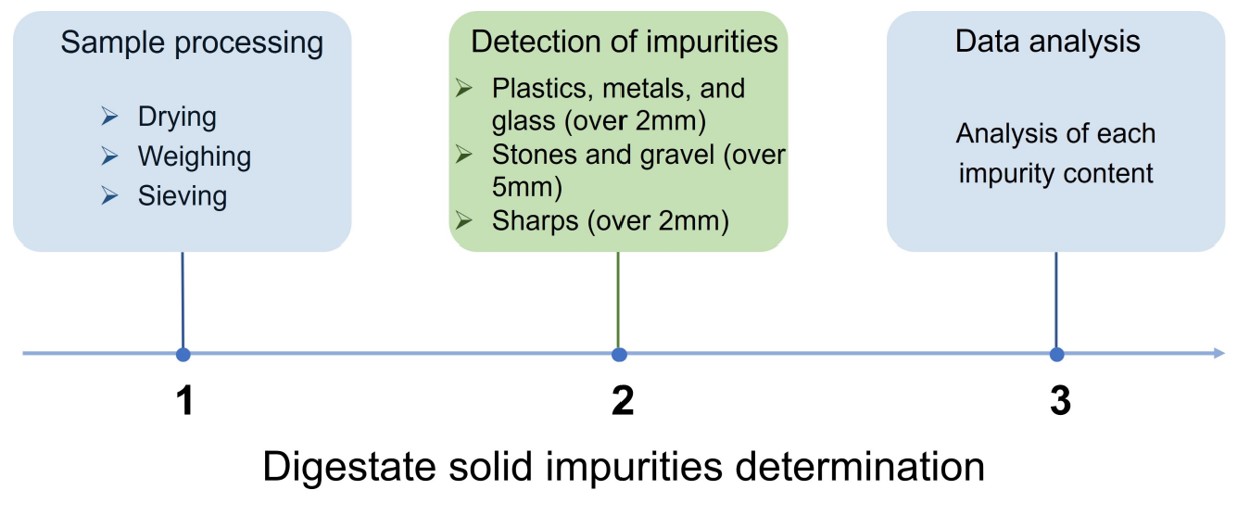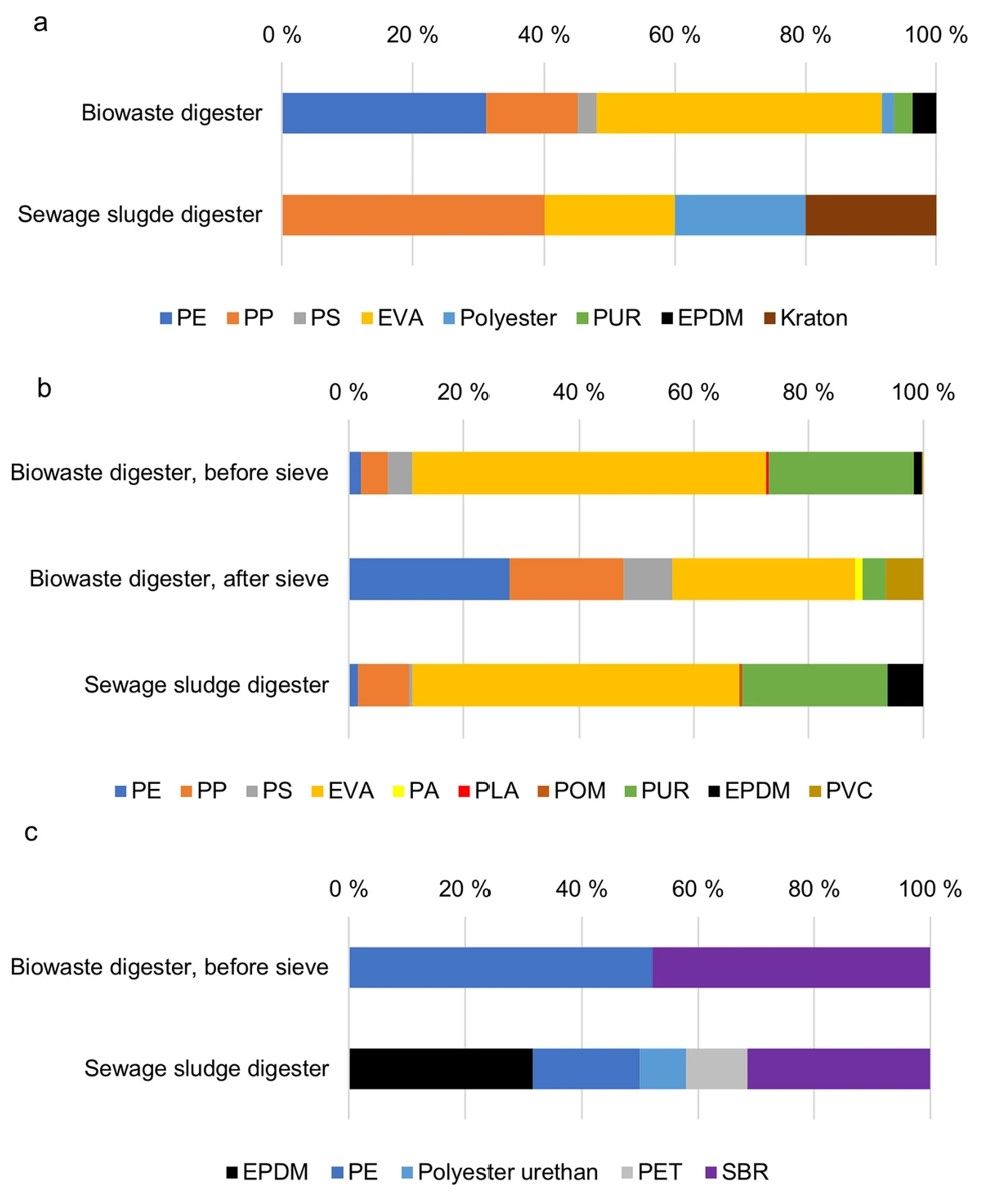Digestate Solid Impurities Determination Service
Trust Our Digestate Solid Impurities Determination for Reliable Result
The digestate obtained from Anaerobic Digestion has a huge energy potential. Before reusing the digestate, it is necessary to analyze the components of the digestate, such as solid impurities, etc. Creative Biolabs provides an accurate and reliable digestate solid impurity analysis service to help researchers explore the value of digestate applications. We are committed to customized analytical solutions and accurate results. Solid impurities analysis includes the following:
-
Common solid impurities in digestate include plastics, glass, stones, sand, metals, etc. These impurities have an impact on the reuse efficiency of digestate. After collection, the samples are dried to remove moisture, weighed, and sieved or filtered. After that, we test the content of each solid impurity by various laboratory techniques, including the following:
-
Sharps (over 2mm)
-
Plastics, metals, and glass (over 2mm)
-
Stones and gravel (over 5mm)
-
The composition of the digestate depends on the Biomass feedstock composition, process conditions during anaerobic digestion, and post-treatment. In addition to the plastics, glass, etc., mentioned above, we also offer testing services for other impurities in digestate, including heavy metals, etc.

The program for analyzing digestate solids for impurities varies depending on the research needs or the intended use of the digestate. In addition to impurities, we also analyze other Biological and Chemical Components of the digestate.
Advantages of Digestate Solid Impurities Determination Service
-
Individualized analytical solutions: We develop customized solutions for the analysis of solid impurities in digestate according to the client's analytical objectives.
-
Accurate and reliable analysis: We use an optimized process to detect solid impurities in individual digestate samples. We pay attention to every detail of the analysis to ensure accurate and reliable results.
-
Good after-sales service: Our experienced team not only provides accurate analysis results but also provides good after-sales service to explore the potential application of digestate.
Creative Biolabs provides a high-quality solid impurity testing service for digestate based on detailed knowledge of the digestate. With our unrivaled service and expert guidance, we help to unlock the potential of digestate. Please feel free to contact us to discuss a detailed proposal for digestate impurity testing if you need this area.
Published data
Collecting information about microplastic content in digestate and wastewater from biogas plants and monitoring their changes play a crucial role in wastewater treatment after anaerobic digestion. This study analyzed microplastic contaminants in sewage sludge, digested biowaste digestate, and digested wastewater at different points in time. The researchers found that all samples contained microplastic particles but with large variations. Most of the microplastic particles entered the digestate fraction during the waste treatment process. This study provides data to support the detection of microplastic particles and the development of more effective post-digestion wastewater treatment methods. Also, this study provides a demonstration of how to analyze digestate solid impurities effectively.
 Fig.1 Types of microplastics in different samples.1, 2
Fig.1 Types of microplastics in different samples.1, 2
FAQs
Q1: What substances are typically contained in digestate?
A1: The composition of digestate depends mainly on the substrate used for anaerobic digestion. In addition to some nutrients, such as organic matter, microorganisms, elements, etc., it also contains some wastes, such as plastics, glass, metals, etc. The composition of the digestate needs to be evaluated before disposal to ensure that the digestate is utilized appropriately and to avoid any harmful effects.
Q2: What impurities are usually detected in digestate?
A2: Solid impurities in digestate vary depending on the feedstock used for anaerobic digestion. Common impurities include plastics, glass, heavy metals, stones, etc. In addition to this, some pathogens, undesirable organic compounds, etc., may also be present in the digestate. These impurities need to be assessed before the reuse of the digestate.
Customer Review
Exploring the Potential of Digestate
"Creative Biolabs impressed us with their extensive experience in anaerobic digestion and analysis of digestate. They defined our objectives and developed a customized digestate impurity analysis plan. There was no doubt that they were experts in anaerobic digestion research. The detailed analytical report provided by them helped us to develop our experimental program and to carry out subsequent studies on digestate."
Accelerating Digestate Research
"Creative Biolabs recently helped us analyze solid impurities in our digestate. We were very pleased with the quality of service they provided. Their staff was very professional, the testing cycle was quick, and they provided some recommendations for digestate disposal, which helped advance our research."
References
-
Öling-Wärnå, Viveka, Nina Åkerback, and Sten Engblom. "Digestate from biowaste and sewage sludge as carriers of microplastic into the environment: case study of a thermophilic biogas plant in ostrobothnia, Finland." Water, Air, & Soil Pollution 234.7 (2023): 432.
-
Under Open Access license CC BY 4.0, without modification.
For Research Use Only.
Related Services


 Fig.1 Types of microplastics in different samples.1, 2
Fig.1 Types of microplastics in different samples.1, 2

